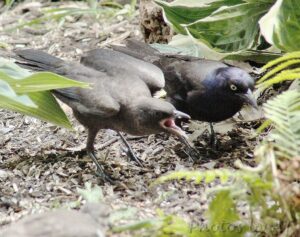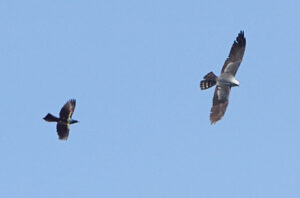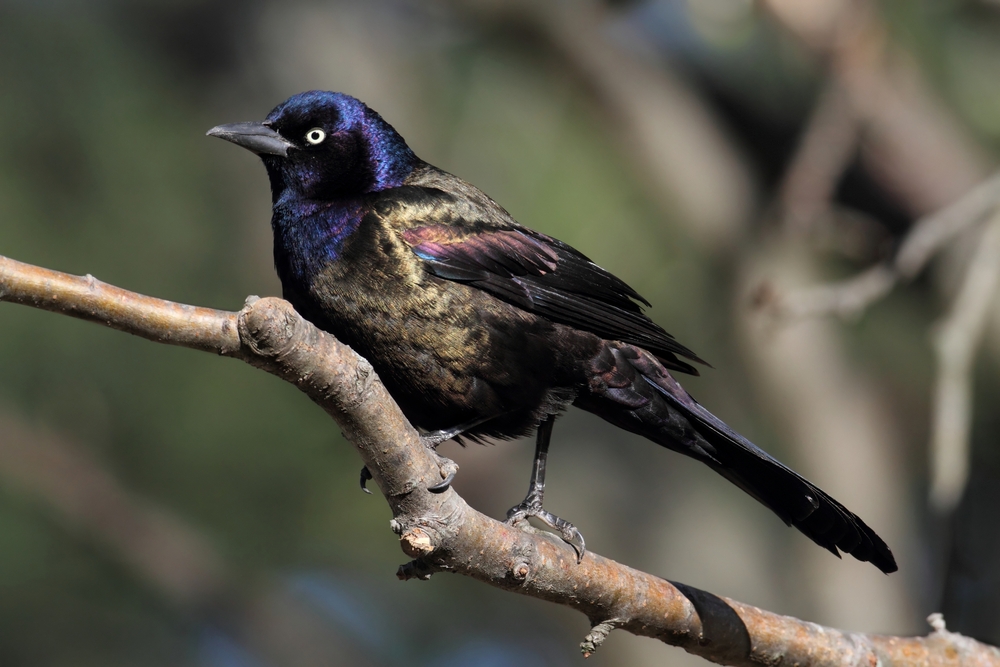Common Grackle, Quiscalus quiscula
Bill Rowe
The icterids (blackbirds and their relatives) are a large family that is unique to the New World. This week’s bird, the Common Grackle, is one of the most numerous icterids—actually one of the most numerous birds, period—whether evenly spread across the countryside and suburbs in breeding pairs (as it is right now) or congregating in sometimes huge flocks in fall and winter. While it certainly qualifies as a “black bird” at a distance, a Common Grackle actually wears striking iridescent bronze-and-blue colors that take many homeowners by surprise when, with the advent of spring, the birds show up at close range on their lawn. Originally an eastern bird, these grackles have been pushing westward for decades, and they now occur over much of New Mexico, Colorado, Montana, and Alberta; this kind of expanding range is the definition of “success” for an animal or a plant. One reason for this success is the grackle’s diet: it is highly adaptable and opportunistic in going after insects, spiders, worms, seeds (including acorns and agricultural grains), fruits, garbage, and even small vertebrates like fish, frogs, and occasionally other birds and their eggs. Out of a total of six species of grackles, three live in the United States, with the Common Grackle being the smallest; its larger relatives are the Boat-tailed Grackle of the Atlantic and Gulf coasts and the Great-tailed Grackle of the south-central and southwestern U.S. and Middle America.
IDENTIFICATION: Blackbirds often occur in mixed flocks, in which Common Grackles stand out as the larger birds (size of a Blue Jay) with longer tails and longer, heavier bills. The tail, creased or folded down the middle, is especially striking in breeding males; when you see them flying across in front of you, they seem to be pulling a black triangle behind them! Females are shorter-tailed and a bit less colorful, and juveniles are dull brown all over. The harsh, wheezy song and the throaty “chuck” call are two more clues that grackles are around.
ST. LOUIS STATUS: Very common in farmland, suburbia, and other open and semi-open habitats with trees for nesting. In winter, more localized but often in dense flocks of thousands.
Learn more and listen to the songs and calls of Common Grackles here.
SPACE

Female with juvenile
Photo Credit: Al Smith
Space

Male chasing off a Mississippi Kite
Photo Credit: Al Smith




